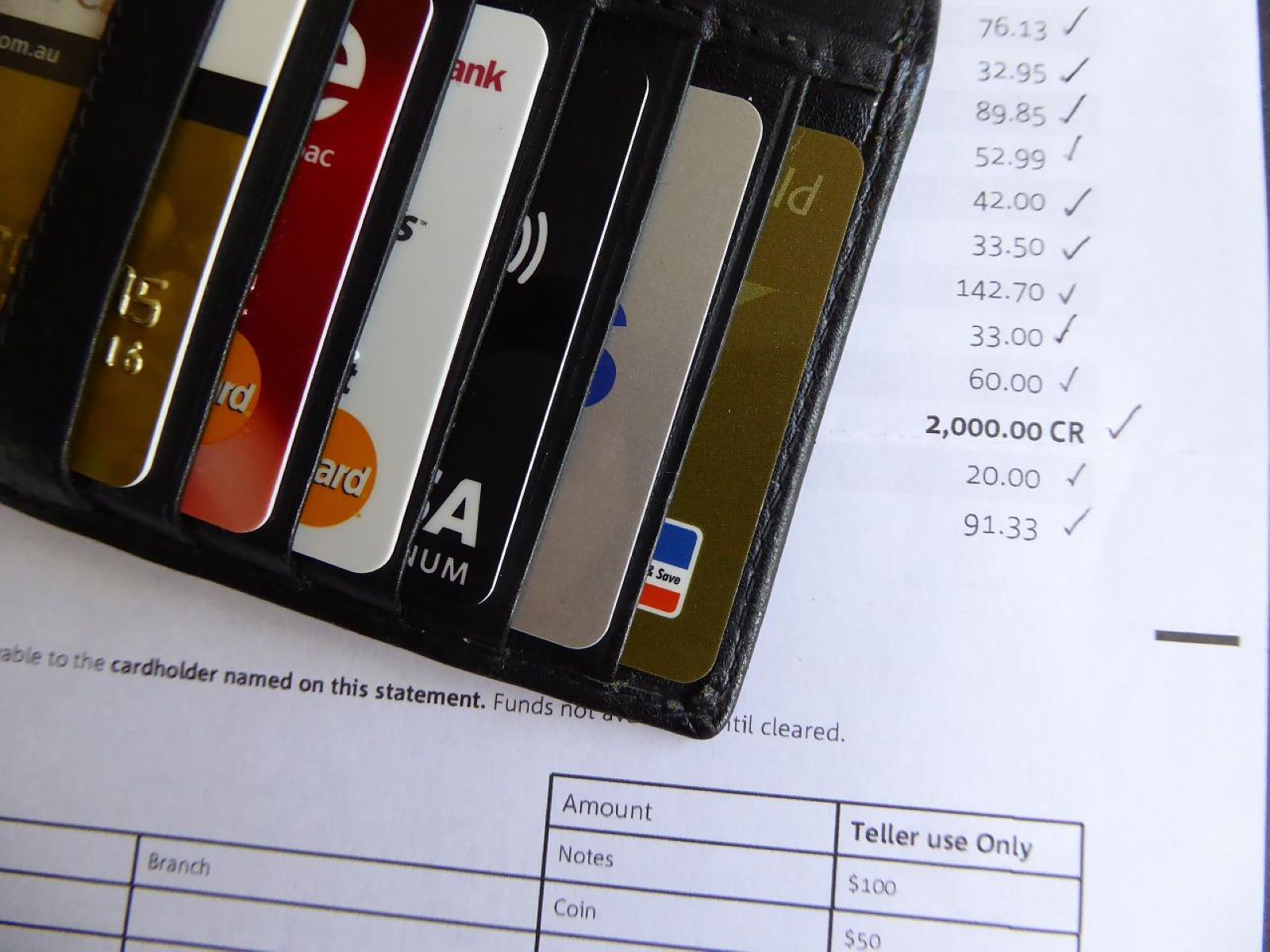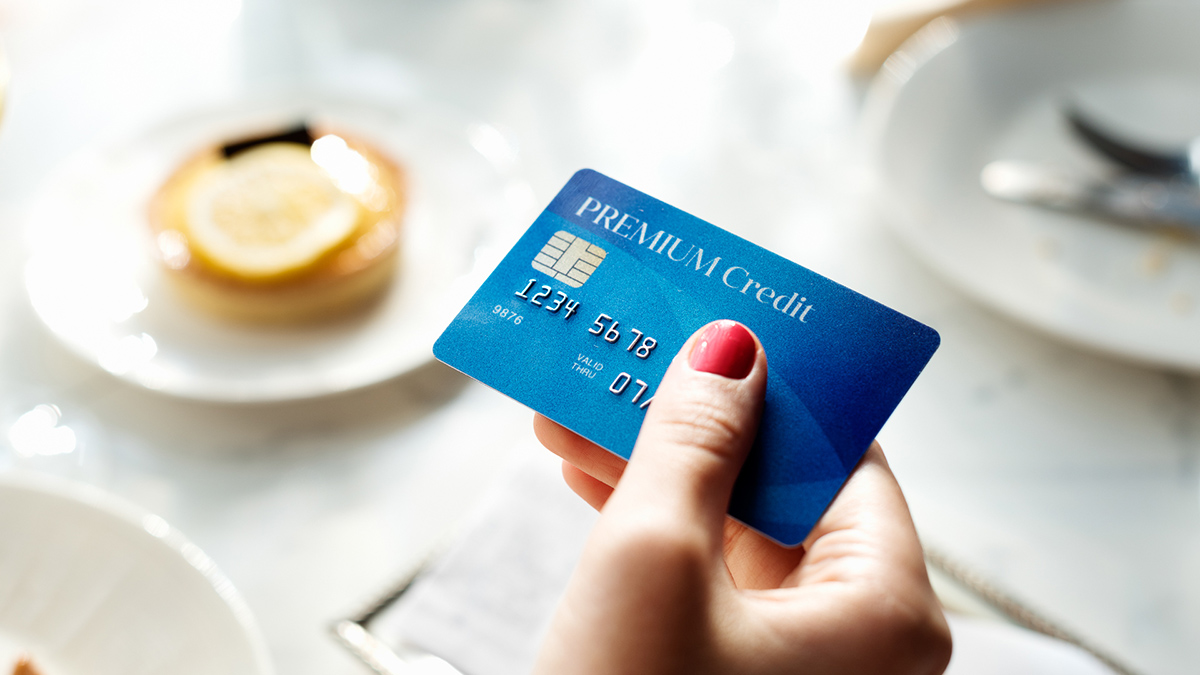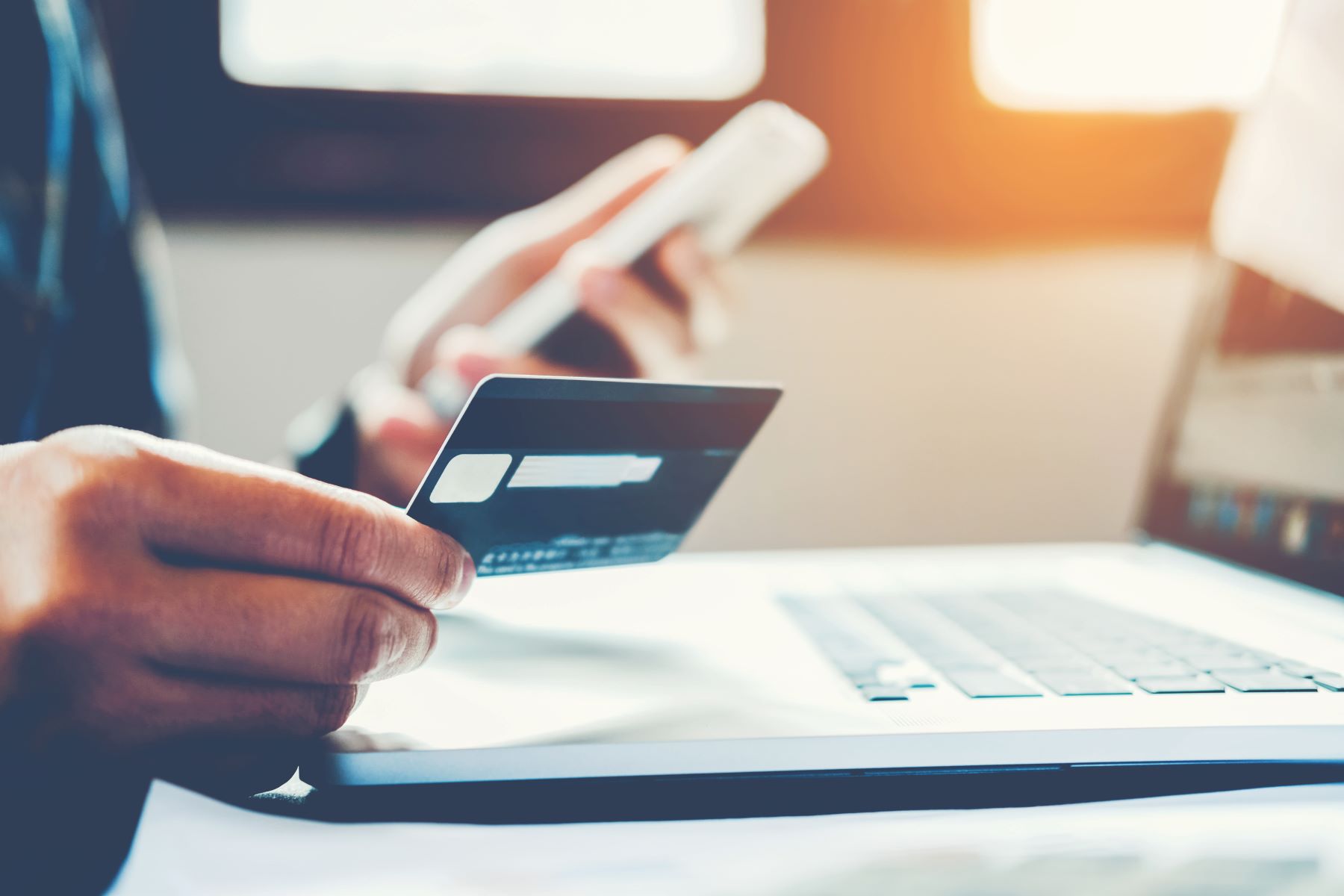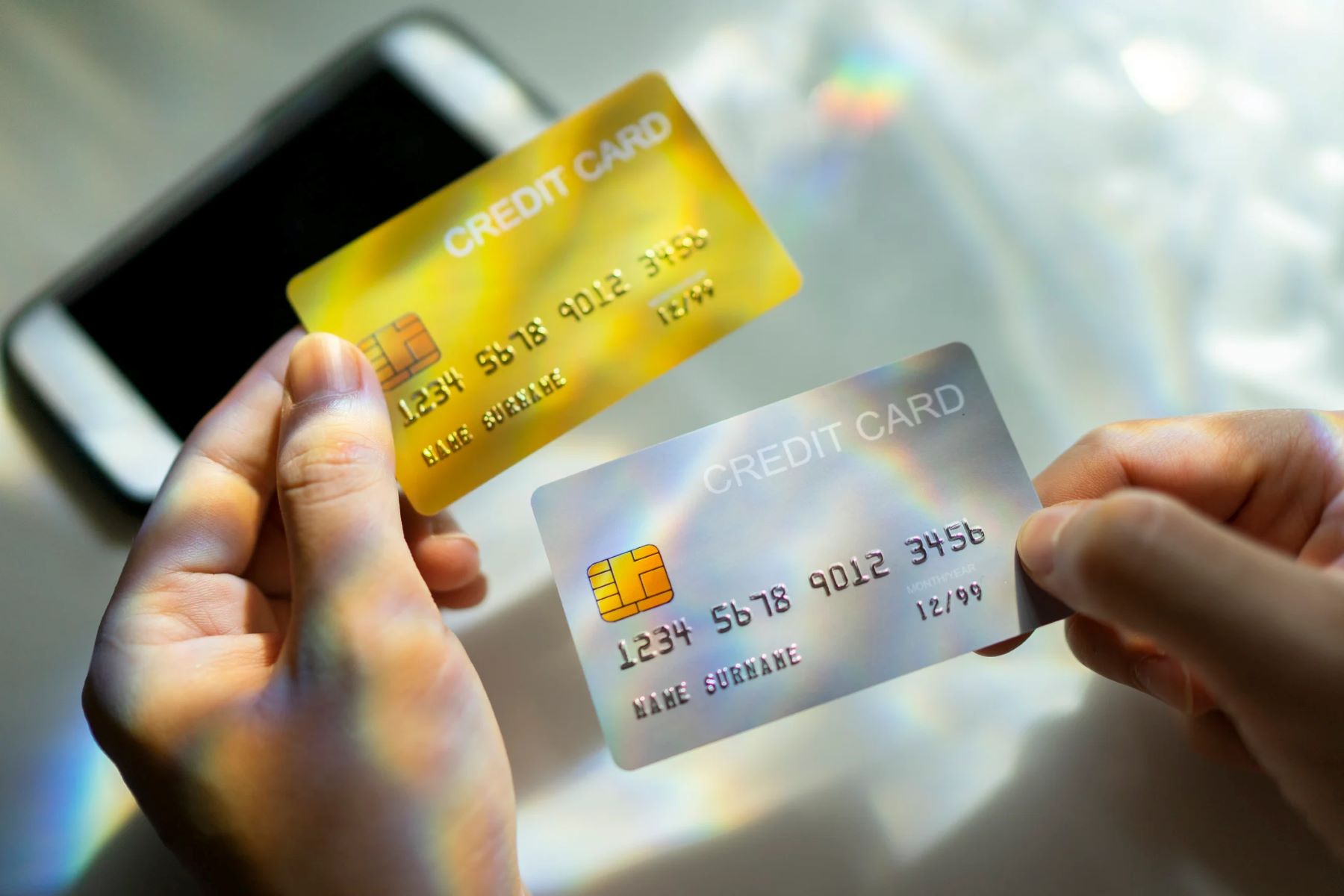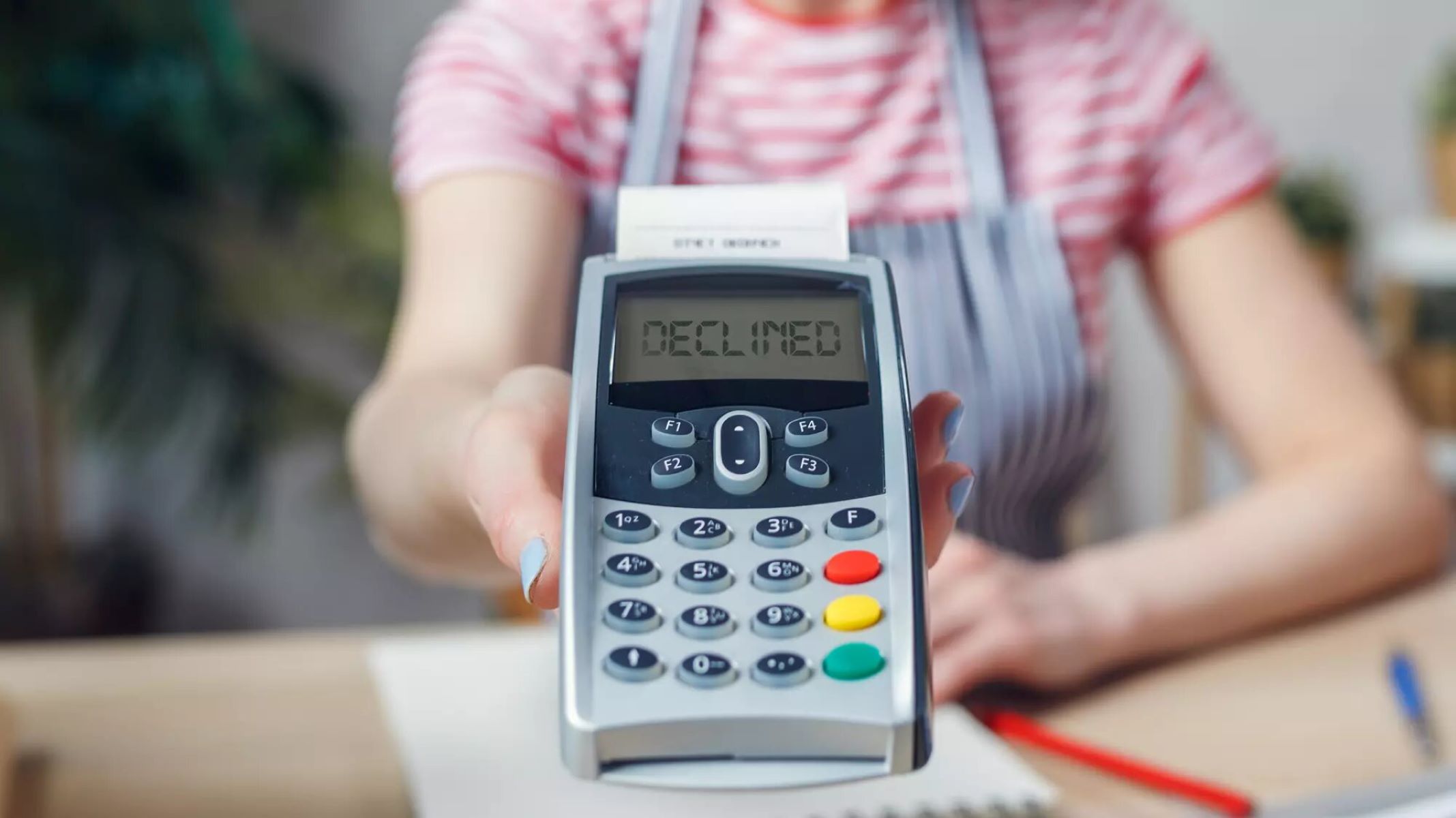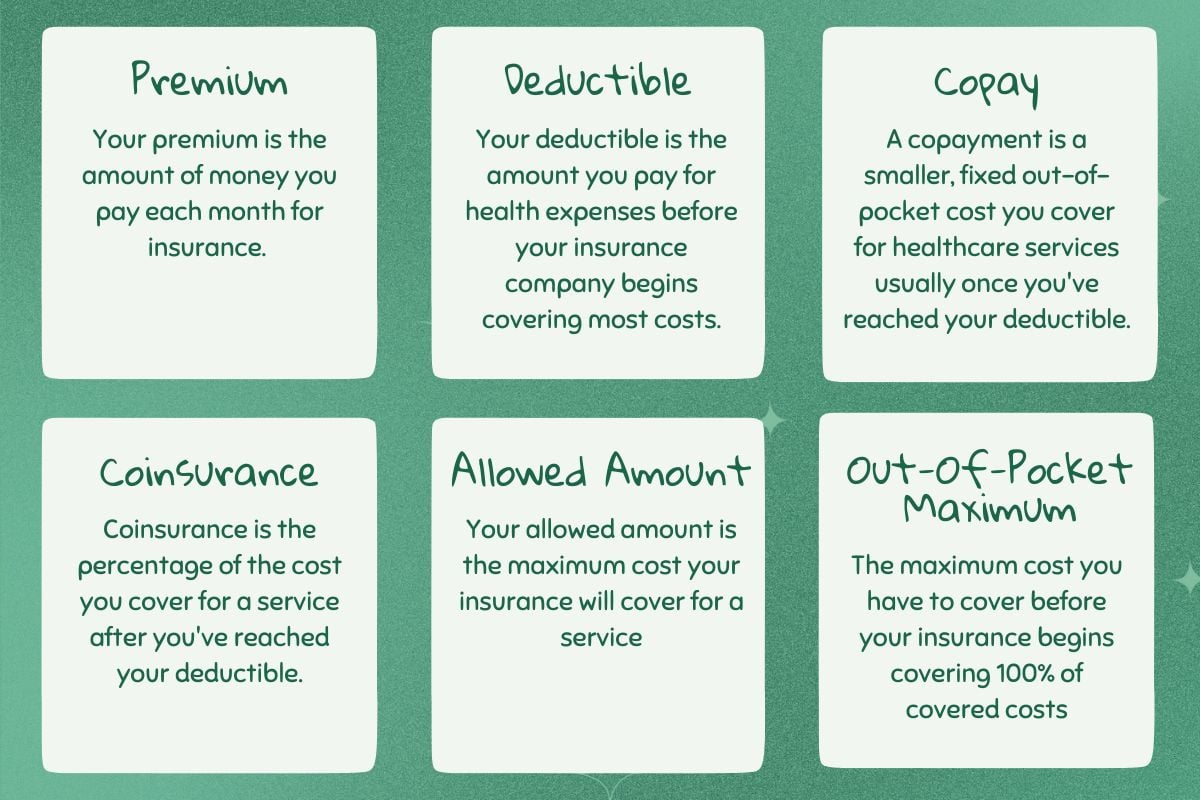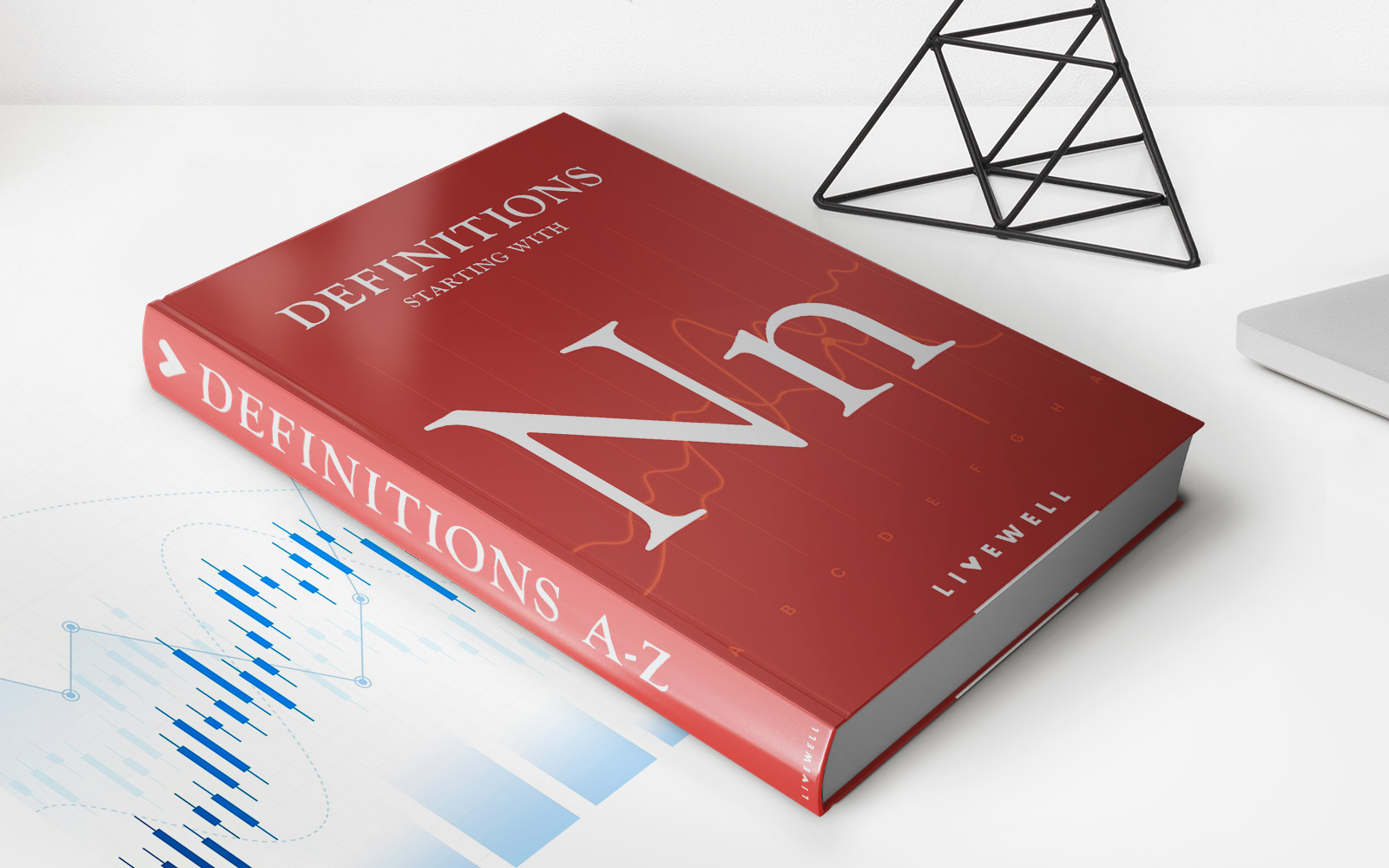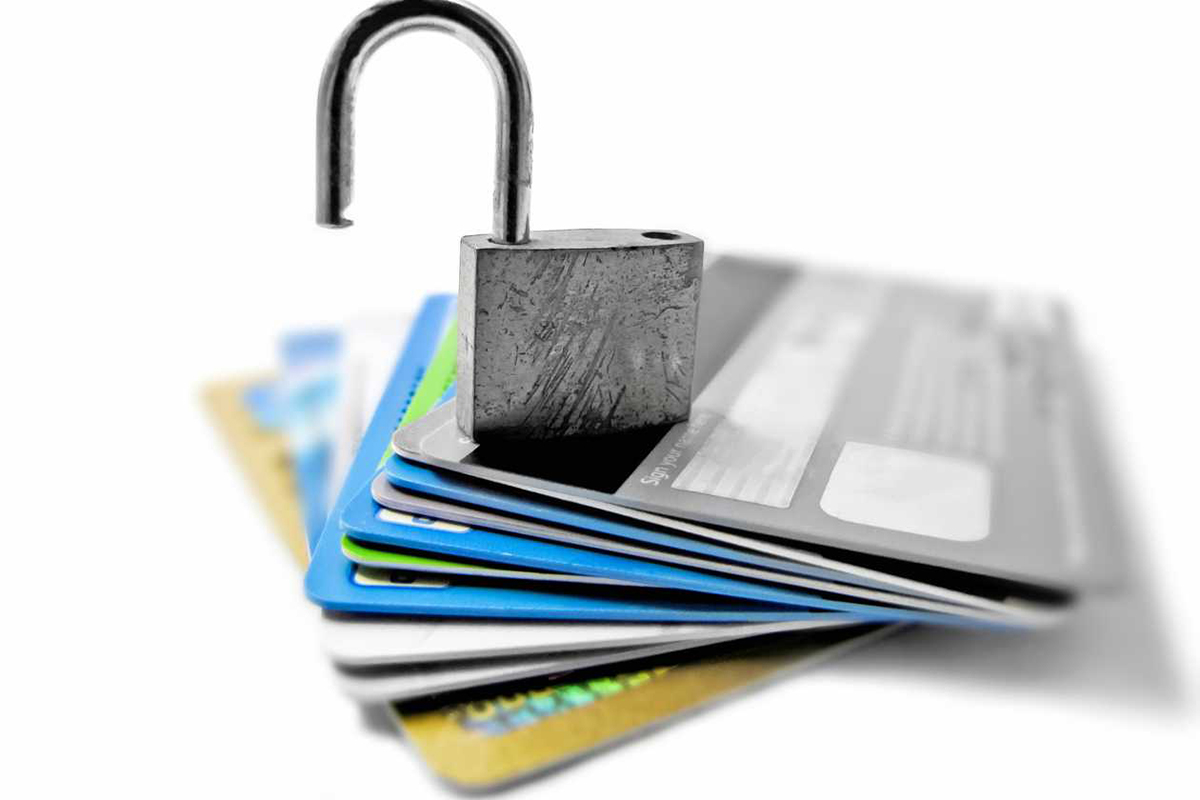

Finance
What Does An Unsecured Credit Card Mean
Modified: January 15, 2024
Find out what an unsecured credit card means and how it relates to finance. Discover the benefits and potential risks of using an unsecured credit card.
(Many of the links in this article redirect to a specific reviewed product. Your purchase of these products through affiliate links helps to generate commission for LiveWell, at no extra cost. Learn more)
Table of Contents
Introduction
In today’s increasingly cashless society, having a credit card is essential for convenient and secure financial transactions. When it comes to credit cards, you may have come across the terms “unsecured” and “secured.” While secured credit cards require collateral, unsecured credit cards do not. In this article, we will focus specifically on unsecured credit cards and delve into their meaning, benefits, drawbacks, and what it takes to qualify for one.
An unsecured credit card is a type of credit card that does not require any collateral or security deposit from the cardholder. Unlike secured credit cards, which are backed by a cash deposit, unsecured credit cards are solely based on the borrower’s creditworthiness and financial history. This means that when you apply for an unsecured credit card, the issuing bank reviews your credit profile, income, and other factors to determine your eligibility and credit limit.
Unsecured credit cards offer the cardholder the flexibility to make purchases and borrow money up to a certain credit limit without having to put down a deposit. This makes them a popular choice for individuals who either don’t have the means to secure a credit card or prefer not to tie up their funds in a security deposit.
However, with the convenience and benefits of an unsecured credit card come certain risks and responsibilities. It’s important to understand how they work, their advantages, disadvantages, and how to use them responsibly to avoid potential financial pitfalls.
Definition of an Unsecured Credit Card
An unsecured credit card is a type of credit card that does not require the cardholder to provide collateral or security deposit to the issuing bank. Instead, the credit card issuer extends a line of credit to the cardholder based on their creditworthiness and financial history. This means that the cardholder can use the credit card to make purchases, withdraw cash, and borrow money up to a specified credit limit without having to pledge any assets as security.
Unlike secured credit cards, which require the cardholder to provide a cash deposit as collateral, unsecured credit cards are solely reliant on the borrower’s creditworthiness. Banks and financial institutions assess factors such as the individual’s credit score, income, employment history, and debt-to-income ratio to determine their eligibility for an unsecured credit card.
One of the key features of an unsecured credit card is the revolving credit line. With a revolving credit line, the cardholder has the freedom to continuously borrow money up to the credit limit as long as they make regular minimum payments and do not exceed the limit.
Unsecured credit cards typically come with an annual fee, interest charges on outstanding balances, and various other fees for late payments, cash advances, or balance transfers. Due to the higher level of risk for the card issuer, unsecured credit cards often have higher interest rates compared to secured credit cards or other forms of borrowing, such as personal loans or mortgages.
It’s important to note that an unsecured credit card does not imply unlimited spending or careless financial management. While it offers the convenience of borrowing money without providing collateral, it carries the responsibility of repaying the borrowed funds and managing credit in a responsible manner.
Now that we have defined what an unsecured credit card is, let’s explore how it works and the benefits it offers to cardholders.
How Does an Unsecured Credit Card Work?
Unsecured credit cards work by providing cardholders with a line of credit that they can utilize to make purchases, pay bills, or withdraw cash without having to provide any collateral. Here is a step-by-step breakdown of how an unsecured credit card works:
- Application Process: To obtain an unsecured credit card, individuals need to complete an application with the credit card issuer. This typically involves providing personal information, such as name, address, date of birth, employment details, and financial information.
- Creditworthiness Assessment: Once the application is submitted, the credit card issuer will evaluate the applicant’s creditworthiness. This includes reviewing their credit score, credit history, income, and any outstanding debts. The stronger the credit profile, the higher the chances of approval.
- Credit Limit Determination: After assessing the creditworthiness, the card issuer determines the credit limit for the cardholder. The credit limit represents the maximum amount of money the cardholder can borrow on the card. It is based on factors such as the individual’s income, credit history, and overall financial stability.
- Card Activation: Once approved, the cardholder will receive the physical credit card in the mail. They will need to activate the card by following the instructions provided by the issuer.
- Card Usage: With the activated card in hand, the cardholder can start making purchases or accessing cash, up to the designated credit limit. This can be done both in-person and online, depending on the card’s acceptance network.
- Monthly Billing: Each month, the credit card issuer sends a statement to the cardholder. The statement lists all the transactions made during the billing period, including purchases, cash withdrawals, and any fees or interest charges incurred.
- Minimum Payment: The credit card statement will indicate the minimum payment due, which is a percentage of the outstanding balance. Cardholders have the option to pay the minimum payment or pay off the entire balance to avoid interest charges.
- Interest Charges: If the cardholder does not pay the entire balance by the due date, the remaining balance will accrue interest charges at the card’s annual percentage rate (APR). It’s important to note that interest charges can accumulate quickly, so paying off the balance in full is ideal to minimize debt.
- Credit Score Impact: Using an unsecured credit card responsibly by making timely payments and keeping the utilization ratio low can positively impact the cardholder’s credit score over time. On the other hand, missed payments or carrying high balances can have a negative effect.
Understanding how an unsecured credit card works is crucial for managing your finances effectively and using the card responsibly. Let’s explore some of the advantages and disadvantages associated with unsecured credit cards.
Advantages of an Unsecured Credit Card
Unsecured credit cards offer several advantages to cardholders, providing them with financial flexibility and convenience. Here are some key advantages of having an unsecured credit card:
- No Collateral Required: One of the main benefits of an unsecured credit card is that it does not require any collateral or security deposit. Unlike secured credit cards, which require upfront cash deposits, unsecured credit cards allow cardholders to access a line of credit based solely on their creditworthiness.
- Flexibility and Convenience: Unsecured credit cards provide cardholders with the flexibility to make purchases, pay bills, and withdraw cash whenever needed. This flexibility can be particularly useful in emergency situations or for managing day-to-day expenses.
- Build and Improve Credit History: Responsible use of an unsecured credit card can help individuals build and improve their credit history. Regular, timely payments, low credit utilization, and maintaining a healthy credit mix can have a positive impact on credit scores over time.
- Rewards and Perks: Many unsecured credit cards offer rewards programs and perks to cardholders. These can include cashback on purchases, airline miles, hotel discounts, or access to exclusive events. By using the card for everyday expenses, individuals can earn rewards and enjoy additional benefits.
- Enhanced Purchasing Power: An unsecured credit card can provide individuals with increased purchasing power. They can make large purchases and pay them off over time, utilizing the credit card’s interest-free grace period or by paying off the balance in installments. This can be especially helpful for expensive items or unexpected expenses.
- Consumer Protection: Unsecured credit cards often come with added consumer protection features. They may offer purchase protection, extended warranties, or dispute resolution services. These protections can give cardholders peace of mind when making transactions.
While unsecured credit cards offer various advantages, it’s important to understand the potential drawbacks and limitations associated with them. Let’s explore some of these drawbacks in the next section.
Disadvantages of an Unsecured Credit Card
While unsecured credit cards provide numerous benefits, they also come with certain disadvantages that cardholders should be aware of. Here are some key drawbacks associated with unsecured credit cards:
- High Interest Rates: Unsecured credit cards often come with higher interest rates compared to other forms of borrowing, such as personal loans or mortgages. If the cardholder carries a balance from month to month, the accumulated interest charges can add up quickly and become a substantial financial burden.
- Annual Fees: Many unsecured credit cards charge annual fees. These fees can impact the overall cost-effectiveness of using the card, especially if the cardholder does not take full advantage of the card’s benefits or rewards program.
- Potential for Debt Accumulation: Without proper financial discipline, unsecured credit cards can lead to excessive borrowing and debt accumulation. The availability of a revolving credit line may tempt some cardholders to spend more than they can afford to repay, which can lead to financial stress and difficulties in the long run.
- Impact on Credit Score: If a cardholder consistently carries high balances or makes late payments, it can negatively impact their credit score. Late payments or high credit utilization ratios can lower a credit score, making it more challenging to obtain credit in the future or receive favorable interest rates on loans.
- Potential for Overspending: Credit cards, including unsecured ones, can make it enticing to overspend. The ease of swiping a card can lead to impulsive buying decisions and a lack of budgeting control. It’s important to practice self-discipline and use the credit card responsibly to avoid financial stress.
- Risk of Fraud: Unsecured credit cards carry the risk of fraud and identity theft. If a cardholder’s personal information or credit card details are compromised, unauthorized transactions can occur, potentially leading to financial loss and the need for lengthy dispute resolution processes.
Understanding the potential disadvantages of unsecured credit cards is crucial for making informed financial decisions. Despite these drawbacks, with responsible usage and careful financial planning, individuals can maximize the benefits of an unsecured credit card while minimizing the potential risks.
Qualifying for an Unsecured Credit Card
Qualifying for an unsecured credit card requires meeting certain eligibility criteria set by the credit card issuer. Here are some factors that card issuers consider when determining whether an individual qualifies for an unsecured credit card:
- Credit Score: Credit card issuers typically assess the applicant’s credit score to evaluate their creditworthiness. A higher credit score indicates a lower risk for the credit card issuer, increasing the chances of approval. Generally, a good credit score (above 670) is favorable for obtaining an unsecured credit card.
- Income and Employment Status: Card issuers may consider the applicant’s income and employment status to assess their ability to repay the borrowed funds. A stable source of income and steady employment history can improve the likelihood of approval.
- Credit History: In addition to credit score, credit card issuers review the applicant’s credit history. They look for records of timely payments, responsible credit utilization, and a demonstrated ability to manage credit responsibly. A positive credit history can enhance the chances of qualifying for an unsecured credit card.
- Debt-to-Income Ratio: The debt-to-income ratio is an important factor in assessing an individual’s financial health. It represents the percentage of monthly debt payments compared to their monthly income. A lower debt-to-income ratio indicates better financial stability and a higher likelihood of approval for an unsecured credit card.
- Existing Credit Accounts: The number of existing credit accounts and the overall credit utilization can influence the decision to grant an unsecured credit card. Having too many open credit accounts or high credit utilization may raise concerns about the individual’s ability to manage additional credit.
It’s important to note that meeting the minimum eligibility criteria does not guarantee approval for an unsecured credit card. Credit card issuers have their own internal approval processes and may consider additional factors when making a decision.
If an individual does not meet the criteria for an unsecured credit card, alternatives such as secured credit cards or credit-building programs may be available. These options can help individuals establish or rebuild their credit history, making it easier to qualify for an unsecured credit card in the future.
Next, we will explore some tips for using an unsecured credit card responsibly to manage credit effectively.
Tips for Using an Unsecured Credit Card Responsibly
Using an unsecured credit card responsibly is crucial for maintaining good financial health and avoiding unnecessary debt. Here are some important tips to keep in mind when managing your unsecured credit card:
- Create a Budget: Set a budget for your monthly expenses and stick to it. Knowing your spending limits will help you avoid overspending and accumulating excessive credit card debt.
- Pay Your Balance in Full: Whenever possible, aim to pay off your credit card balance in full each month. This will help you avoid interest charges and minimize your overall debt.
- Make Timely Payments: Pay your credit card bill on time every month. Late or missed payments can negatively impact your credit score and may result in late payment fees or an increased interest rate.
- Avoid Maxing out Your Credit Limit: Keep your credit utilization ratio low by using only a small portion of your available credit. Aim to keep your utilization below 30% to demonstrate responsible credit management.
- Monitor Your Statements: Regularly review your credit card statements to ensure all transactions are accurate. This will help you identify any unauthorized charges or errors and report them to your credit card issuer immediately.
- Avoid Cash Advances: Cash advances usually come with high fees and interest rates. Whenever possible, avoid using your credit card for cash withdrawals to minimize the cost of borrowing.
- Avoid Excessive Credit Card Applications: Applying for multiple credit cards within a short period can negatively impact your credit score. Only apply for new credit cards when necessary and carefully consider the impact on your overall credit profile.
- Keep Track of Annual Fees: If your credit card has an annual fee, make sure you are utilizing the card’s benefits enough to justify the cost. Consider canceling or downgrading the card if the fees outweigh the rewards or perks provided.
- Regularly Check Your Credit Score: Monitor your credit score to track your progress and identify any changes or potential issues. You can use free credit monitoring services or obtain a free credit report annually to stay informed about your creditworthiness.
- Use Credit for Responsible Purposes: Utilize your credit card for necessary and responsible purposes, such as building credit, emergencies, or planned expenses. Avoid charging unnecessary items or indulging impulsive purchases that could strain your financial situation.
By following these tips, you can make the most of your unsecured credit card while maintaining control of your finances and building a strong credit history.
Now let’s summarize the main points and conclude our discussion on unsecured credit cards.
Conclusion
Unsecured credit cards provide individuals with a convenient and flexible way to access credit without having to provide collateral. They offer numerous benefits, such as financial flexibility, the ability to build credit history, rewards programs, and consumer protections. However, it’s important to be mindful of the potential drawbacks associated with unsecured credit cards, such as high interest rates, annual fees, and the risk of overspending and accumulating debt.
Qualifying for an unsecured credit card requires meeting certain eligibility criteria, including a good credit score, stable income, and a responsible credit history. By using an unsecured credit card responsibly, making timely payments, and keeping credit utilization low, individuals can not only maximize the benefits of the card but also build a positive credit history over time.
To ensure responsible credit card usage, it is essential to create a budget, pay off the balance in full each month, and avoid excessive borrowing. Regularly monitoring credit card statements, avoiding cash advances, and using credit for responsible purposes are also vital for maintaining financial well-being.
Unsecured credit cards can be powerful financial tools when used responsibly. They provide individuals with the convenience and purchasing power they need while allowing them to build a positive credit history. By understanding the advantages, disadvantages, and proper usage of unsecured credit cards, individuals can make informed decisions and effectively manage their financial lives.
Remember, the key to successfully utilizing an unsecured credit card lies in responsible and disciplined financial habits, with a focus on maintaining control over your spending and debt management. With these strategies in place, you can harness the benefits of an unsecured credit card while safeguarding your financial future.
